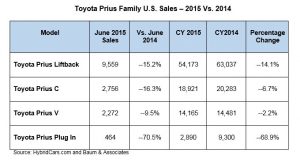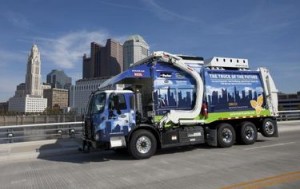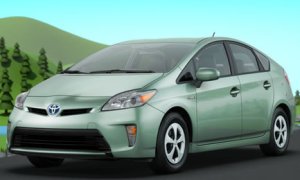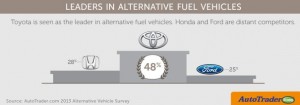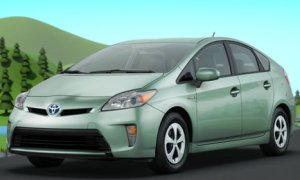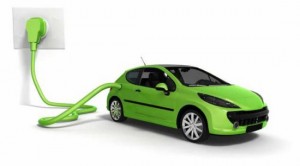by Jon LeSage, editor and publisher, Green Auto Market
Here’s my take on the 10 most significant and interesting occurrences during the past week…….
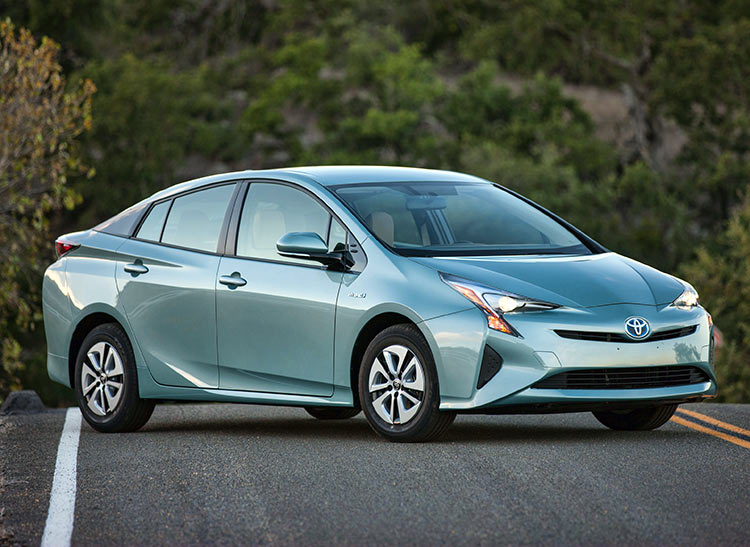 Hybrid and EV sales: The Toyota Prius dropped out of the top spot for the first time in January, with the Ford Fusion Hybrid finishing first in U.S. sales. The Prius hybrid drop goes beyond the usual sales decline at the time of year, dropping 28.1% in sales from January 2016, according to HybridCars’ Dashboard. The Fusion has been doing well lately, also finishing in the third spot in the plug-in hybrid category for January. The Prius Prime plug-in hybrid had a good month, finishing ahead of the Toyota Model S in sales. The plug-in vehicle market leader was the Chevy Volt, with 1,611 units sold in the U.S. last month. Another interesting result was seeing the new Chevy Bolt all-electric car come in at 1,162 units sold, right behind the Model S, which had 1,200 units sold. Overall, plug-in sales were down 52.4% from December but up 65.1% from the previous year; hybrids were down 32.3% from the previous month and up 7.6% from a year ago.
Hybrid and EV sales: The Toyota Prius dropped out of the top spot for the first time in January, with the Ford Fusion Hybrid finishing first in U.S. sales. The Prius hybrid drop goes beyond the usual sales decline at the time of year, dropping 28.1% in sales from January 2016, according to HybridCars’ Dashboard. The Fusion has been doing well lately, also finishing in the third spot in the plug-in hybrid category for January. The Prius Prime plug-in hybrid had a good month, finishing ahead of the Toyota Model S in sales. The plug-in vehicle market leader was the Chevy Volt, with 1,611 units sold in the U.S. last month. Another interesting result was seeing the new Chevy Bolt all-electric car come in at 1,162 units sold, right behind the Model S, which had 1,200 units sold. Overall, plug-in sales were down 52.4% from December but up 65.1% from the previous year; hybrids were down 32.3% from the previous month and up 7.6% from a year ago.- Super Bowl ads: While the controversial Trump administration policy on immigration had its share of references in Super Bowl commercials, green car spots were a bit light this year. The game started with the long “2017 Ford Go Further” ad showing people getting stopped from what they want to do. It was full of mobility services Ford is getting into including bike delivery and Chariot van shuttles, but it only gave a brief nod to one of its electric vehicles being charged. Toyota’s Mirai fuel cell vehicle saves the life of a poor daisy being choked to death by fossil fuel pollution. Comic Melissa McCarthy gets to use the 2017 Kia Niro Eco hybrid to drive forward and help save whales, pine trees, ice caps, and rhinos – each time narrowly escaping death in painfully hilarious outcomes. “It’s hard to be an ecowarrior, but it’s easy to drive like one,” says the Kia voice over.
- Job loss from federal regs: Ford CEO Mark Field’s claim that going forward on the Environmental Protection Agency’s finalized fuel economy and emissions rules will cost the auto industry a million jobs was overstated and inaccurate, according to analysis of the data. During a speech last month at the NADA conference in New Orleans, Fields said that a few studies had shown these results; more recently, a Ford spokeswoman clarified that the analysis came from one report by Center for Automotive Research. The huge job loss was one of several scenarios that the report delved into, with another possible scenario finding that about 144,000 jobs could be created in the auto industry from the federal rules. For the potential million jobs lost, only 322,000 jobs would be in the automotive sector, according to the study. The remaining 805,000 jobs lost would indirectly relation to vehicle manufacturing.
- Fleet lawsuit against VW: Volkswagen Group is being sued by a company that had acquired a large number of VW diesel vehicles drawn into the emissions “cheating” scandal. German fish distributor Deutsche See sued the automaker for misrepresenting a fleet of vehicles it leased as environmentally friendly. Duetsche See leases about 500 vehicles from VW, and said it had been able to reach an out-of-court settlement. This is the first corporate customer to sue in Germany. The automaker faces several lawsuits from VW owners, regulators, states, and dealers, with many of them coming from U.S. class-action suits.
- Ioniq coming to America: For those wondering when the first electrified Ionics will be released by Hyundai, a company executive said that will happen this week. Mike O’Brien, vice president-product planning for Hyundai Motor America said that the hybrid and all-electric variations are coming to the U.S. sometime this week. The plug-in hybrid version will roll out in September. The automaker sees the Ioniq sedan, especially the hybrid, playing a big part of its green vehicle strategy. The Ioniq hybrid’s 58 mpg rating should make it competitive with the Toyota Prius.
- BYD electric buses: Major Australian airport ground transportation provider Carbridge has placed orders for 40 more all-electric buses from BYD. The contract was signed three months after the first BYD Electric Blu bus made its commercial debut at Sydney Airport. The Electric Blu can carry up to 70 passengers and has a range of 400 kilometers (248.5 miles) per charge. “We are the first Chinese company to crack Australia’s electric bus market, having come a long way since the trial of our electric buses at the country’s busiest airport in Sydney in late 2014,” said Liu Xueliang, General Manager of BYD’s Asia Pacific Auto Sales Division.
- Tesla owners get Ontario incentive: Owners of fully loaded, expensive Tesla Model S and Model X vehicles can now tap into a revised electric vehicle rebate in the Canadian province of Ontario. Consumers are now eligible for the rebate that can go up to $14,000. A cap has been taken off for vehicles that can go over $150,000 in price, such as a Model S P100D.
- Musk not quitting Trump panel: South African-born U.S. citizen, and Tesla CEO, Elon Musk said he won’t be following Uber CEO Travis Kalanick in quitting President Trump’s economic advisory panel over the immigration issue. Musk claims that he managed to get the immigration ban discussed “first and foremost” on the meeting agenda where it wasn’t even going to be mentioned at all; and that he raised the climate change issue once more. Musk and General Motors CEO Mary Barra were scheduled to meet with Trump at forum on Friday, according to Automotive News. The two main topics were said to be immigration and corporate taxes.
- NGV annual report: Check out NGVAmerica’s annual report for the latest on legislative policy issues and how to make the case for the benefits of using natural gas vehicles. One bipartisan bill, if passed, would increase cost savings for using heavy-duty NGVs. The association reports that “the Natural Gas Tax Parity Act of 2016 (S.3372 and HR 6111) would provide a permanent 35 percent exclusion from the 12 percent FET for heavy-duty trucks powered by natural gas. This would result in an average tax savings of $7,000 per heavy-duty truck. NGVAmerica worked closely with Sen. Cassidy and Rep. Ryan to write this legislation that would help level the playing field for natural gas among other transportation fuels.”
- LCFS summit: The agenda is available on the Clean, Low-Carbon Fuels Summit hosted by Calstart to be held Feb. 27-28, 2017, in Sacramento, Calif. One panel will include a briefing on the California Public Utilities Commission “SB 350” proceeding, which has recently received proposals by the state’s three largest utilities to collectively invest more than $1 billion in charging infrastructure, with a focus on medium and heavy duty vehicles. A roundtable for truck and bus fleet operators will focus on Renewable Natural Gas (RNG) distributors and farms and other businesses that are sources of biogas. Speakers will include Henry Stern, State Senator, California State Senate; Mike Britt, Director of Maintenance & Engineering, UPS; Richard Corey, Executive Officer, California Air Resources Board; Karen Hamberg, Vice President of Natural Gas Industry and Government Relations, Westport; and Janea Scott, Commissioner, California Energy Commission.

 China is facing a challenge similar to the U.S. – how to get car shoppers to buy more clean vehicles and less gas guzzling pollution emitters like large SUVs. While plug-ins, or “new energy vehicles,” have taken off in sales during the past couple of years, China’s regulatory and incentive structure appears to be changing toward a broader definition of clean vehicles. Toyota and a few Chinese automakers and suppliers are asking the government to support plug-less hybrids as another way to reduce tailpipe emissions and dependence on imported oil
China is facing a challenge similar to the U.S. – how to get car shoppers to buy more clean vehicles and less gas guzzling pollution emitters like large SUVs. While plug-ins, or “new energy vehicles,” have taken off in sales during the past couple of years, China’s regulatory and incentive structure appears to be changing toward a broader definition of clean vehicles. Toyota and a few Chinese automakers and suppliers are asking the government to support plug-less hybrids as another way to reduce tailpipe emissions and dependence on imported oil